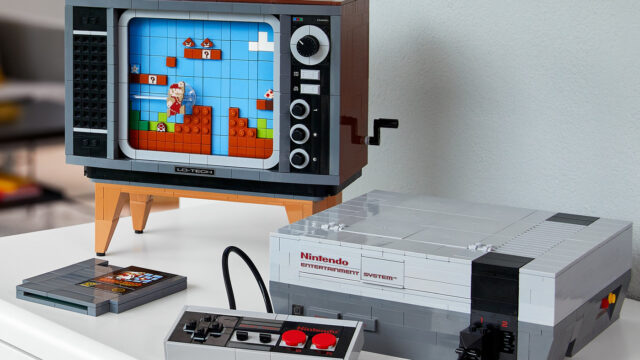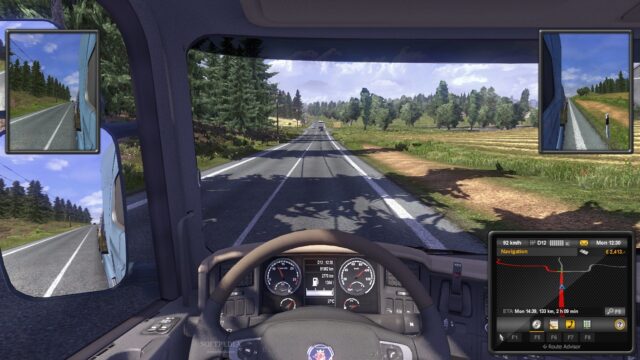
In 1995 the acid house era saw Sonic the Hedgehog’s introduction to the world, and it’s over 40 years since arcade games first made an appearance.
The world has evolved since then, and so has the gaming industry. Arcade games have come and gone, handheld consoles made an appearance, died out, and then made a comeback, and now mobile phones have the gaming world’s monopoly.
Click here and let’s take a look at how far the world of gaming has come and where it all began those years ago.
The 1950s saw the rise of video games, but it was the 70s when they finally began to catch on and become more mainstream. Video arcade games and consoles started to make an appearance, and coin-slot arcade games became increasingly popular. These were mainly shooting or racing-themed games such as the well-known Sega’s Periscope and Chicago Coin’s Speedway.
The golden era of arcade games took place between 1978 and 1982 and marked the beginning of the gaming console craze, with Japan releasing some of the first and best video games of that time. Early video games were mainly instructional and research programs, but they slowly evolved and started to introduce popular board games and puzzles to the world of technology.
They soon became digital fun for many. Spacewar was considered revolutionary for its time and triggered further development of the industry. Towards the end of the golden age, the first home gaming console, the Magnavox Odyssey, was released, making gaming more accessible for families.
Nintendo Entertainment System

In 1983 one of the greatest video game consoles was released and took the market by storm. The 8-bit Nintendo Entertainment System (NES) blew all its competitors out of the water and set the bar high from that point forward.
1994 saw the release of Sony’s first PlayStation, and not long after that, PC gaming started to catch on. Games such as Alone in the Dark, Wolfenstein 3D, and Half-Life were among some of the more popular PC games at the time.
Towards the end of the 90s, CDs and PCs began to develop as the industry started to demand more storage space and abilities for the latest video games being introduced. CDs and PCs paved the way for cult games such as Counterstrike and Unreal Tournament to leave their mark.
Multiplayer Online Role-Playing Games

2001 was a revolutionary year for the gaming industry; as Microsoft has launched its new endeavor, the Xbox and Halo began to catch on. Broadband Internet became more affordable and, in turn, accessible, introducing players to the vast world of Massively Multiplayer Online Role-Playing Games (MMORPG). But the beginning of the 2000s also marked the beginning of the rise in mobile gaming.
As mobile phones became more accessible and developers introduced color screens, the Nokia N-Gage was soon booted out and traded for the latest smartphone. These smartphones were often accompanied by various pre-installed games such as Angry Birds, Candy Crush Saga, and Temple Run.
Now 2001 – 2025

Mobile phones still have a significant influence on the world of gaming, but they have to share the stage with the various home gaming consoles currently on the market. The latest Xbox Series X was recently launched along with its competition, the PS5. Nintendo still hangs around with successful handheld consoles such as the Nintendo Switch and their ever-popular Nintendo Wii.
Mobile phones have become the run of all things gaming by providing access to various web games and online sites that offer casino experiences, betting pools, and various other forms of entertainment.
Simulation Games

Simulation games have been proved to be an effective research tool and support various scientific developments in space exploration and biotechnology.
The world of gaming has come so far over the years, and no longer requires gamers to sit in a dark room and be isolated from society.
Games such as Pokemon Go encourage users to get up and get out and socialize. Technology evolves so fast that gamers can take their favorite forms of entertainment everywhere they go, which is a far cry from the 50s when your online form of video game entertainment involved a vast, stationary computer with extremely pixelated graphics.
In an article written by tandfonline.com 5G technology will take gaming to the next level; gaming will be in a completely different ballpark in two years and unrecognizable in five years. One thing for sure things can only get better, faster, and more accessible.
Shortage of Computer Chips

One thing the gaming industry didn’t have five years ago was a shortage of computer chips; in fact, the problem has only recently hit a crisis as the popularity of gaming has increased. The global pandemic combined with natural disasters has caused a technology-based perfect storm.
In an article written for statista.com, gaming has increased and will increase by 1billion gamers by 2025, generating revenue of 78.3 billion U.S. dollars.
A 6-year drought in Taiwan means computer chip production has been dramatically curtailed, severe heat followed by heavy snow has stopped production in Texas. Unfortunately, that’s not all trade wars between China and America that put the final nail in the computer chip coffin.
So, where does that leave gamers? Technically gamers are up the creek without a paddle, but practically, computer chip manufacturers will catch up. Joe Biden has committed $37 billion to create a chip manufacturing plant you can see from outer space.
Realistically the shortage will affect other consumer areas, for example, fridges and cars, before it affects the gaming industry. So influential in the gaming industry, people would rather walk than not buy the latest console or mobile gaming device.
Chip manufacturers have full-order books and will be back to total capacity in 12 to 18 months meaning perhaps the world will have to wait for the PS6 or Xbox double XX (I made that up). In the meantime, gamers should take solace in the fact that 30 years ago, the best thing on offer was a comic or a game of scrabble.












